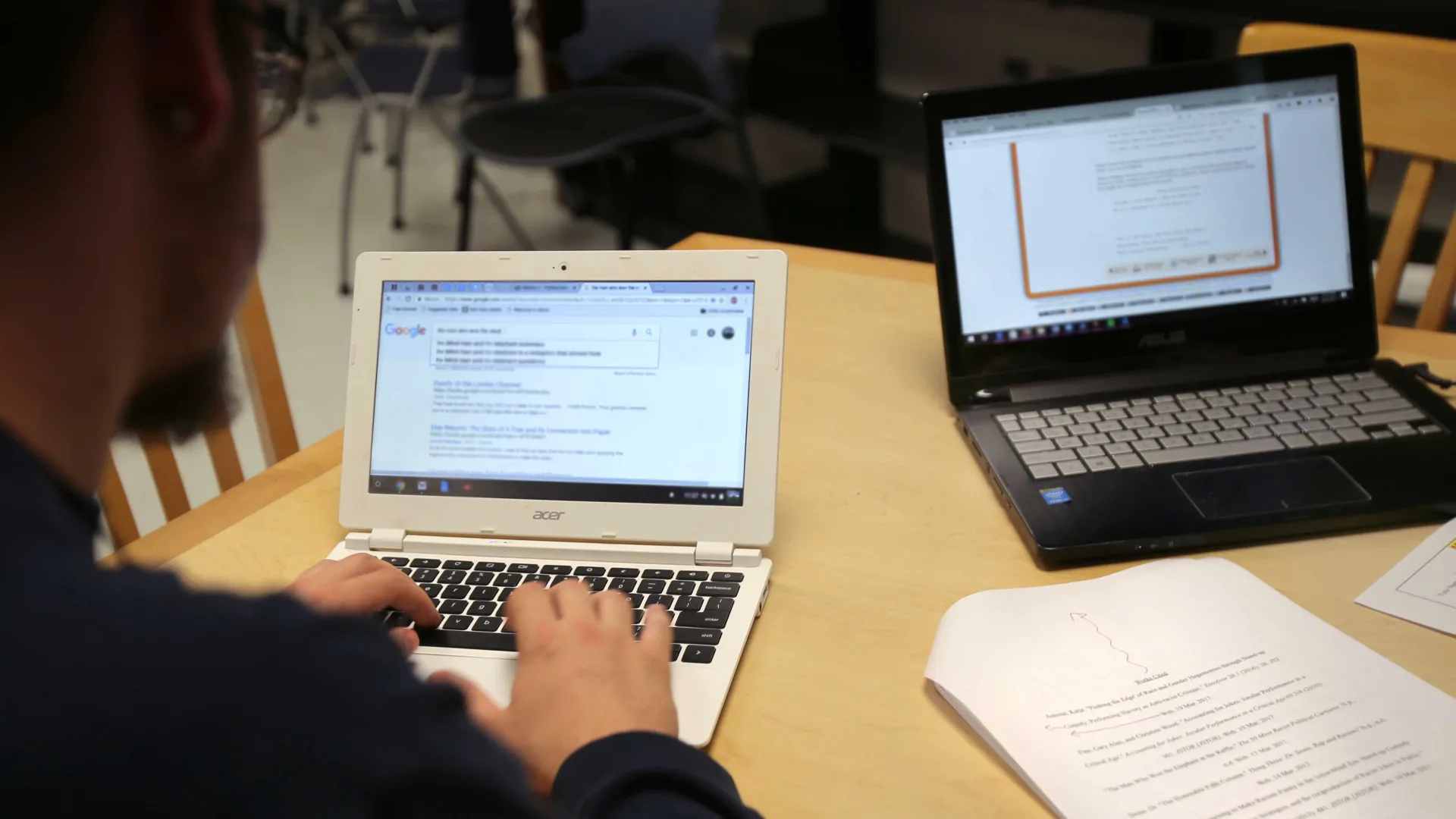Joe Gutierrez | CSUSB Office of Strategic Communication | (951) 236-4522| joeg@csusb.edu

When Cal State San Bernardino went virtual in the last week of spring 2020 due to COVID-19, the Academic Technologies & Innovation (ATI) Department of the Information Technology Services Division went into overdrive, offering five webinars per day to help faculty quickly ramp up their skills in virtual teaching.
The key topics included: setting up a course and creating quizzes and exams in the Blackboard (Bb) learning management system; using Bb’s Grade Center; and best practices with academic technology tools such as Zoom, VoiceThread, PlayPosit, GoReact, and Gradescope.
Since then, recordings of the best instances of 16 of these workshops have been collated into a Library of Webinars for Virtual Teaching webpage as an ongoing resource for faculty.
“Our five ATI instructional designers demonstrated admirable dedication to our faculty and students when they stepped up on 48 hours’ notice to provide the large amounts of training our faculty needed to cope with the new all-virtual teaching mode,” said ATI interim director Bradford Owen.
ATI also launched a Faculty Peer Tech Advisor Program. In this program, a competitively selected faculty member from each of CSUSB’s five colleges held virtual office hours over several weeks where fellow faculty could get help with any aspect of their virtual teaching. ATI created an online booking system for these faculty peers and for ATI’s instructional designers whereby faculty can sign themselves up for any available appointment slot.
To help further strengthen faculty virtual teaching for fall 2020 semester, and in collaboration with CSUSB leadership, Academic Technologies & Innovation and the Teaching Resource Center (TRC) developed and launched the CSUSB’s Summer Virtual Teaching Institute (SVTI) from June to August 2020.
“Our faculty wanted to give our students a world class learning experience in the virtual format. These training institutes give them the tools and techniques to help them do just that,” said Samuel Sudhakar, vice president for Information Technology Services and CIO at CSUSB.
Track One was designed for faculty who would like to gain a wide knowledge of best practices in virtual teaching. Participants took the CSU Office of the Chancellor’s virtual course “Introduction to Online Teaching Using QLT,” an asynchronous course that has been taken by thousands of CSU faculty. The course covers the carefully developed and empirically based Quality Teaching and Learning (QLT) standards and rubric for virtual courses. The course spanned 21 days, required approximately 20 to 25 hours of work (about 60 to 90 minutes per day) and was facilitated by ATI instructional designers Tracy Medrano and Ron Friedman. “Introduction to Online Teaching Using QLT” was offered three times: From June 15 to July 5; from July 6 to July 26; and the third will be from August 3 to August 23. Placement in these three periods was first-come, first-served, and participants were required to earn a completion score of 85 percent.
Track Two was designed for faculty who already have knowledge of and experience with best practices in virtual teaching. Faculty who chose this track participated in one or more of 14 different Faculty Learning Communities (FLCs) designed to develop knowledge, best practices, and resources on topics related to virtual teaching. Examples include “Promoting Student Engagement in Virtual Classrooms,” “Immersive Reality Applications for Virtual Courses,” and “Creating a Virtual Physics Laboratory.” These FLCs were faculty-originated and led by CSUSB faculty facilitators.
Track Three was prioritized for CSUSB’s graduate teaching assistants in the Departments of English and Communication Studies teaching English composition and oral communication, respectively, and also served other CSUSB adjunct and tenure-line faculty. Participants on this track completed the virtual microcredential course “Promoting Active Learning Online,” offered by the American College and University Educators (ACUE) organization and subsidized by the CSU Office of the Chancellor. Another useful resource for faculty was LinkedIn Learning (formerly Lynda.com). This resource is available free to all CSUSB faculty via MyCoyote>My Employment and provides tutorials and entire short courses on techniques and tools. Some of the tutorials focused on virtual teaching include “Learning to Teach Online,” “Blackboard Essential Training,” “Teaching Online: Synchronous Classes,” and “E-learning Essentials: Instructional Design.”
ATI and the TRC will offer more sections of “Introduction to Teaching Online Using QLT” and ongoing webinars on virtual teaching in fall semester (and beyond) as CSUSB faculty, students, and the entire campus community continue to work together to fulfill CSUSB’s mission during the COVID-19 pandemic.
“I am extremely impressed and thankful the ATI collaborative was able to step up and assist our nearly 1,000 faculty in a manner that reached them ‘where they are’ in terms of online teaching. We had something for everyone at every level,” said Shari McMahan, provost and vice president for Academic Affairs.